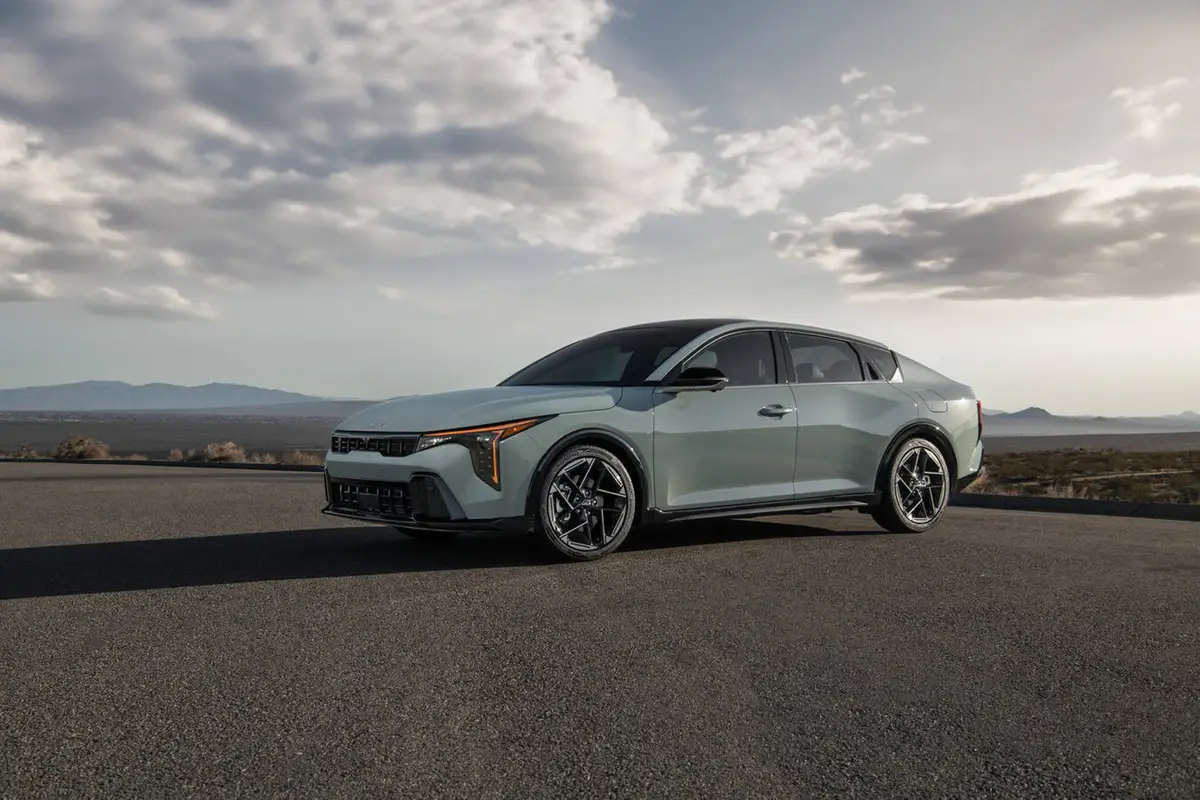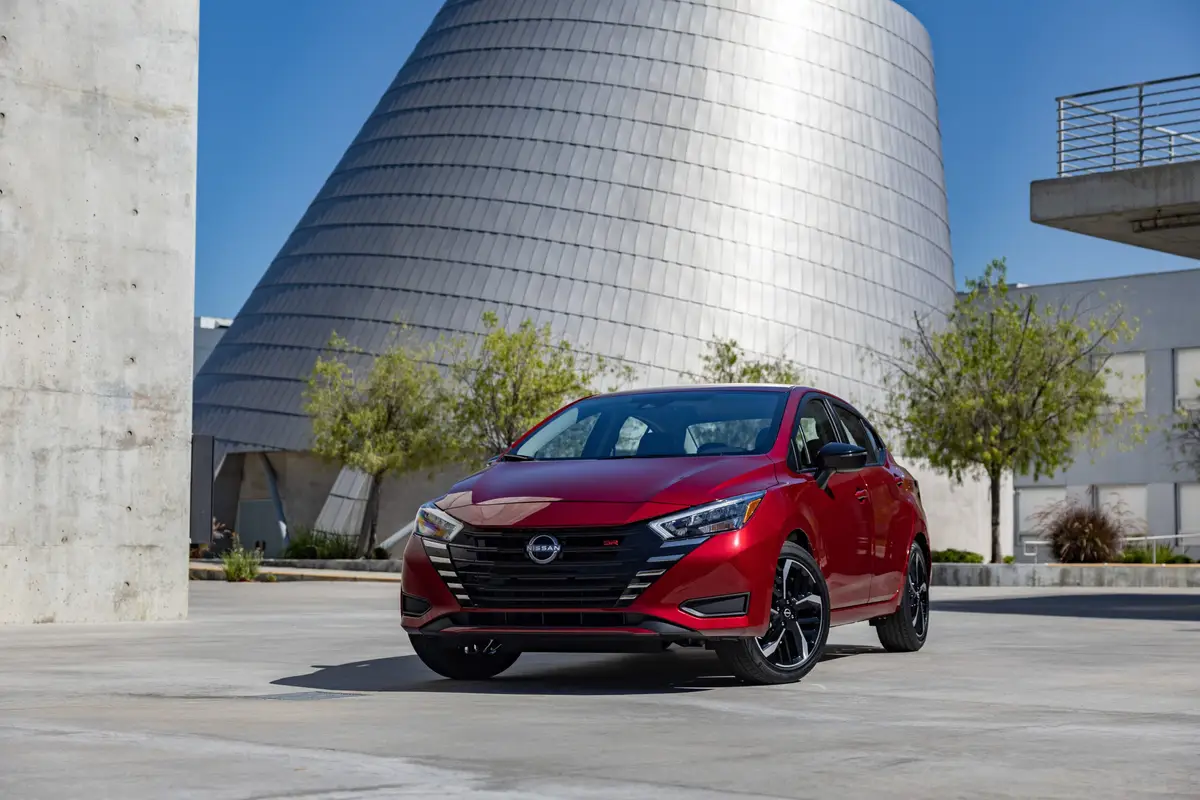Cincinnati.com's view
Lordy, another Tempus Fugit moment:
The Toyota Camry enters its fifth generation, after an 18-year run. It seems like just a few years ago when I attended the introductory ceremonies and heard a product planner explain that the name is derived from the Japanese kan-muri, meaning crown. The handle was concocted to establish a new image while retaining a link with the past – the model it replaced was the Corona, Latin for crown. As long as we’re on the trivia byway, let me tick off the generations: No. 1 was introduced in 1983. No. 2 came along in 1987, and started to be built at the new Georgetown, Ky. plant in 1988. Gen 3 came in 1992, and wasn’t superseded until 1997. Along the way, it established a legendary reputation for build quality and reliability. It was never flashy, although coupe variants had a certain panache, but it became obvious that it provided those qualities the buying public values most – good value and trouble-free ownership. It was always a contender for the top spot in family-car sales derbies.
Gen 4 was the best-selling car in America for four years running, edging the big-selling Honda Accord and Ford Taurus. This year, showing its age a bit, it has fallen behind the Accord. Through September, 319,841 Accords were sold, vs. 293,350 Camrys. Honda’s trend was up, while Toyota’s was down. Those are huge numbers in the auto field, surpassed only by sales of full-size pickups. With the 2002 reinvention of the Camry – a totally new car – Toyota hopes to elbow its archrival aside and regain the sales crown.
The Camry stylists were faced with a dilemma – you don’t mess with success, but their car was widely referred to as solid but boring. They’ve cautiously enhanced the visual appeal to keep up with the more radical under-skin improvements. In this piece, I’ll mainly be discussing the LE series, the plainest of the line. I requested it first, and will follow up later with one from the other end of the price spectrum. There’s an SE version with more sporting appeal, and the XLE brings some luxury touches to the table.
The LE starts at a braggable $18,970. For that you get a front-wheel-drive midsize sedan with a 2.4-liter four-cylinder engine and five-speed manual transmission. It also has air conditioning, power windows, locks, steering and brakes, cruise control, tachometer, outside temperature gauge (bravo, Toyota), map lights, rear defogger, remote release for trunk and fuel filler, 60/40 fold-down rear seats and an AM-FM-cassette-CD stereo with six speakers. That would be a very serviceable car, although I’d want to add antilock brakes and perhaps side and head-curtain air bags from the options list. The grandest series, XLE, starts about $6K upstream.
To my eye, the jazziest feature of the new Camrys is the taillamps, an eye-catching lenticular design that’s becoming a common theme these days. They echo the multi-reflector design of the headlamps. The front bumpers seem a bit overdone – the y have something of a battering ram look, while the hood and sides have subtle accent lines that elevate the feel from pure appliance status. On the inside, the LE is a plastics showroom. Contrasting shades and textures, along with a bit of cloth on the doors, do ever so little to mitigate the low-rent feel, and the various surfaces do not integrate quite so well as we’ve come to expect from Toyota – early build problem, perhaps.
Controls are well-placed and knobs are big enough for meaty paws. The radio interface is high on the dash, but faces up, the better to catch reflections through the moonroof, and might seem more user-friendly if canted toward the driver a bit. The climate-control knobs are electrical switches rather than mechanical cable-tuggers, which adds a distinct quality feel.
The latest Camry is wider and taller than its predecessor, and sits on a two-inch longer wheelbase (107.1 inches). The extra space is largely devoted to the second-class seating accommodat making that an adult-rated environment. Considerably more than midsize myself, I nonetheless had plenty of room behind the wheel, and getting there required no untoward exertion. (Later in the model year, Camry will have adjustable pedals, the better to accommodate the altitudinally-challenged.)
You can get a V-6 engine even in the LE series, but it’ll cost you more than 2 grand extra, because it comes only with the automatic transmission. Do you need to upgrade?
I don’t think so. The standard 16-valve, twin-cam four-banger produces 157 hp (@5,700 rpm) and 162 foot-pounds of torque (@4,000). Nothing rip-snorting there, but, even with the automatic trans I tested, it FELT better than its 10-second 0-60 time would indicate, and was not scary making freeway merges, the bottom-line criterion for economy-oriented cars.
The transmission had the smarts to shift up and down fairly aptly, and gear changes were quick and nearly undetectable except under full throttle. The engine becomes a little obtrusive beyond 5,000 rpm, but if you push it that hard, you’re asking for it.
Good news: I logged 28.6 mpg in mostly country running, with the gears changing often, and that on regular. There wasn’t much compression braking in third, but it was not uncomfortable to potter around in overdrive. FYI: the V-6 prefers premium fuel.
Camry offers a very smooth ride, even over unfriendly surfaces. The steering is fairly light and quick, but road feel is pretty well muted. Still, the car goes where you point it and behaves itself well even you’re bad.
I was a bit taken aback to see the tester was fitted with the Goodyear Liberty tires that had recently provided so many inadvertent thrills on a Chrysler Voyager I tested. Accordingly, I proceeded with great caution on the first rainy-day outing in the Camry.
My confidence soon increased to the point that I was doing high-rate maneuvers with no excess slippage. Even when I deliberately locked the brakes in a simulated panic stop on a wet macadam road, the Camry (sans antilock) stopped straight and true. I can’t really explain why the Libertys were a better match for the Camry than they were for the minivan – sample variation, perhaps?
Alas, neither the government nor the insurance industry has crash-tested this most important car yet.
The tester had an $875 package which included a stereo upgrade, so you’ll have to assess the base unit on your own. The JBL rig was quite good, with very good presence, excellent clarity and surprising tuner sensitivity, given the in-glass antenna. Other items in the package are keyless entry and a power driver’s seat. A power moonroof added another $900 and floor and cargo mats were $179, for a total, with freight, of $22,239.
Payments on that car would be $451, assuming 20 percent down, 48 installments and 10 percent interest. It’s too soon for the analytical firm Edmunds to have a “true market value,” but they do note a nearly $2,000 spread between invoice and sticker on the LE with 4-cylinder and automatic, so there’s some wiggle room.
“The Gannett News Service”
Latest news



